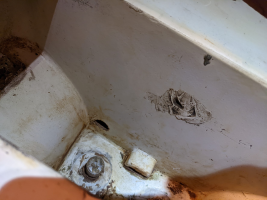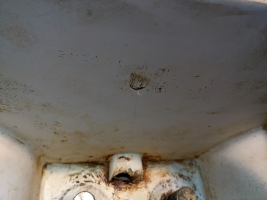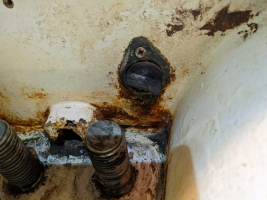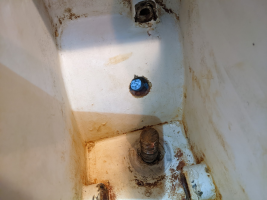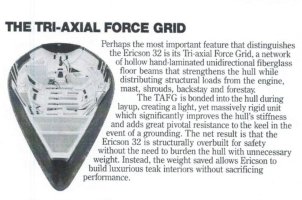DrZiplock
Member II
Hey, folks
I'll likely turn this into a blog post at some point, but wanted to share some ongoing bilge/keel bolt work and check with the hive mind on a few things.
First up, we all know that a clean bilge is a happy bilge. Respira did not come with a clean bilge. She's been sitting on the hard with a few too many leaks and the pumps off for far too long. The accumulated debris was a sigh to behold - so to work I went.
Here's where we started:
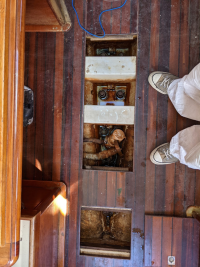
Standing water, filth, and three sad and busted pumps.

Here's the forward most bilge where the shower was draining. Which is something that I fully plan on doing away with. Living aboard with shower water in the bilge is a no go for me.
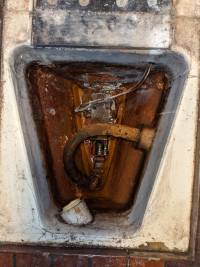
Whilst cleaning and scrubbing I found this little, um, repair/patch(?) job that the previous owner left in.

They epoxied the ever loving hell out of this washer and nut, and it took a finger belt sander to actually reach the hardware.
Onward I go.
I wanted to pull the nuts, split rings, and washers to inspect all of them and the bolts and I am very glad that I did. Here is a sample of what the washers were looking like:

I'm no washerologist, but that is not good. It looks like the split ring has been slowly chewing through the washer over time. Most of the nuts I could actually loosen by hand which was another thing that gave me pause. I bought new 316 stainless washers that will work, but upon thinking about it am going to go in another direction. For all the sets of double keel bolts I'm going to use a stainless bracket that spans them both and then tighten down with locknuts. The brackets are being made by a fabricator as we speak. I have 3M 4000 that I'll use to seal/bed them down with.
Anywhere, here's what happens when you scrub with bleach, GooGone, sand, acetone wipe, and then hit with a coat of Total Boat Bilge Paint (with another coat or two happening soon):
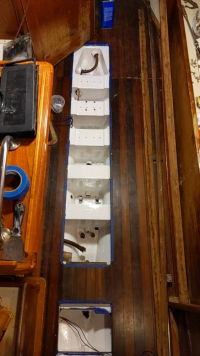
Questions in the next post.
I'll likely turn this into a blog post at some point, but wanted to share some ongoing bilge/keel bolt work and check with the hive mind on a few things.
First up, we all know that a clean bilge is a happy bilge. Respira did not come with a clean bilge. She's been sitting on the hard with a few too many leaks and the pumps off for far too long. The accumulated debris was a sigh to behold - so to work I went.
Here's where we started:

Standing water, filth, and three sad and busted pumps.

Here's the forward most bilge where the shower was draining. Which is something that I fully plan on doing away with. Living aboard with shower water in the bilge is a no go for me.

Whilst cleaning and scrubbing I found this little, um, repair/patch(?) job that the previous owner left in.

They epoxied the ever loving hell out of this washer and nut, and it took a finger belt sander to actually reach the hardware.
Onward I go.
I wanted to pull the nuts, split rings, and washers to inspect all of them and the bolts and I am very glad that I did. Here is a sample of what the washers were looking like:

I'm no washerologist, but that is not good. It looks like the split ring has been slowly chewing through the washer over time. Most of the nuts I could actually loosen by hand which was another thing that gave me pause. I bought new 316 stainless washers that will work, but upon thinking about it am going to go in another direction. For all the sets of double keel bolts I'm going to use a stainless bracket that spans them both and then tighten down with locknuts. The brackets are being made by a fabricator as we speak. I have 3M 4000 that I'll use to seal/bed them down with.
Anywhere, here's what happens when you scrub with bleach, GooGone, sand, acetone wipe, and then hit with a coat of Total Boat Bilge Paint (with another coat or two happening soon):

Questions in the next post.

